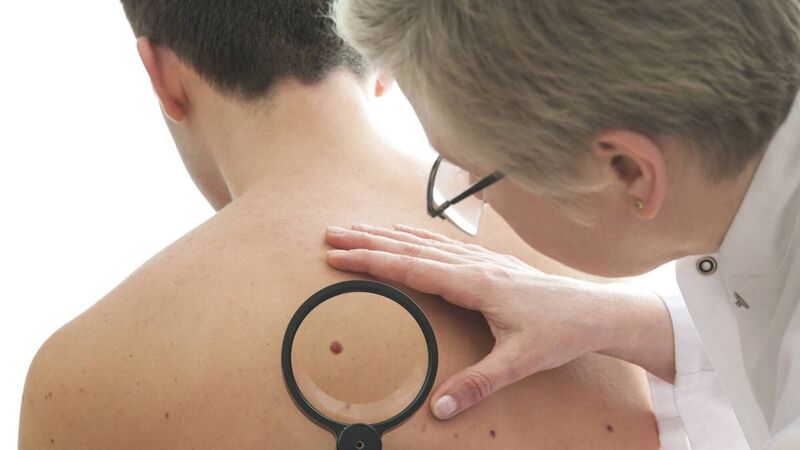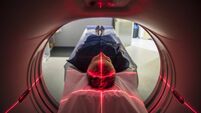Thousands on dermatology waiting lists as hospitals fail to refer patients to new service

National dermatology waiting lists now stand at 39,979 people. Picture: PA
Potentially-fatal skin cancers are being missed or treatment delayed due to the slow uptake of a private service under contract to the HSE to clear waiting lists, it has been alleged.
One hospital which signed up said that one in five patients it referred were diagnosed with skin cancer, including some with malignant melanomas.
DermView has received patients from just five hospitals in Dublin, Drogheda, and Cavan since winning a HSE contract in October 2021, out of 27 offering various levels of adult dermatology care.
A source familiar with the rollout suggested this may be partly down to a dispute between consultants. The Irish Cancer Society (ICS) said purchasing private capacity may be part of a short-term solution but this will not solve systematic issues in public healthcare.
National dermatology waiting lists now stand at 39,979 people.
"[We] had the capacity to take on an extra 19,000 patients that went unused and it is looking like the same capacity for 2023 will go unused unless more hospitals open their doors," said DermView CEO Eoin O’Reilly.
“The figures clearly show hospitals using DermView have achieved the largest waiting-list reductions," said Mr O’Reilly, a co-founder with dermatologist Dr Rupert Barry.
Dublin Midlands Hospital Group lead for dermatology and member of the national clinical programme advisory group Dr Bairbre Wynne said: “Getting the patients diagnosed early really is life-saving.”
Before this, the St James's unit was giving appointments for 2027, she said.
“Since the start of this project we have taken 4,100 off our waiting lists. It has been huge,” she said.
Between March and December, 20 patients were diagnosed with melanomas, the most serious skin cancer, said Dr Wynne, a “small shareholder” in the company.
Patients meet dermatological nurses and have medical photographs taken, which are shared with consultants. They are offered in-person or remote treatment, paid for by the HSE.
A source said there is “some resistance to change”, adding: “Nobody likes disruptive technology.”
They said: “People don’t like losing control of their lists. Sometimes management have done deals clinicians are not happy with, so you can get some friction internally in hospital groups. Or you can have central problems, where one side of the HSE makes a deal and the other side says, ‘I don’t like that’.”
This week DermView was told by University Hospital Waterford that it is not going ahead with plans to join. A spokesman said the hospital is recruiting two more dermatologists. ”UHW continue to explore all options to reduce the current dermatology waiting list," the spokesman said.

The HSE confirmed a framework/panel agreement, which DermView is part of, is in place for the provision of medical and surgical services.
However, ICS director of advocacy Rachel Morrogh said while “demand from patients far outstrips the capacity available amongst dermatologists practising in public clinics”, many solutions are needed.
“Public healthcare needs to be resourced, supported, and built up so that the gap between waiting times [for] public and private patients is narrowed significantly,” she said.
Ms Morrogh said the National Cancer Control Programme has also started programmes to address these waiting lists, including allowing GPs to make electronic referrals to pigmented lesion clinics.
Data she has seen shows “448 people were referred via this pathway in December 2021 but 1,194 people were referred in April 2022", she said.
“Every year in Ireland, over 1,000 new cases of melanoma are diagnosed,” she said.
“There are over 150 melanoma-related deaths. Melanoma incidence rates are now similar among men and women, due to steep increases in male incidence in recent years.”














